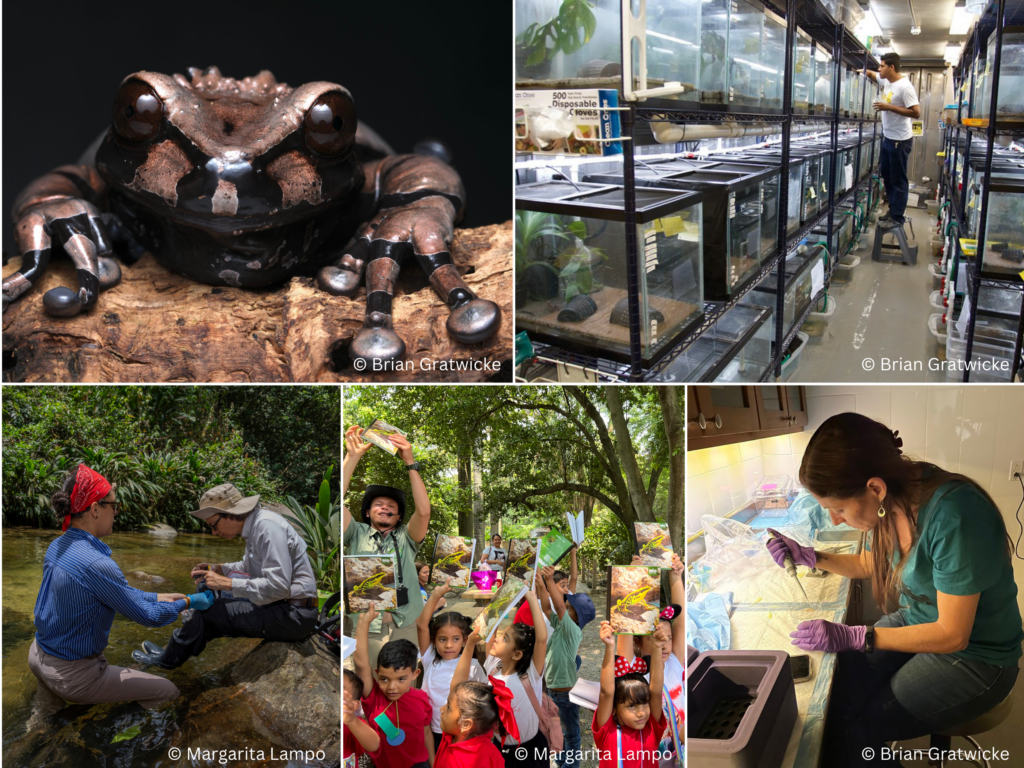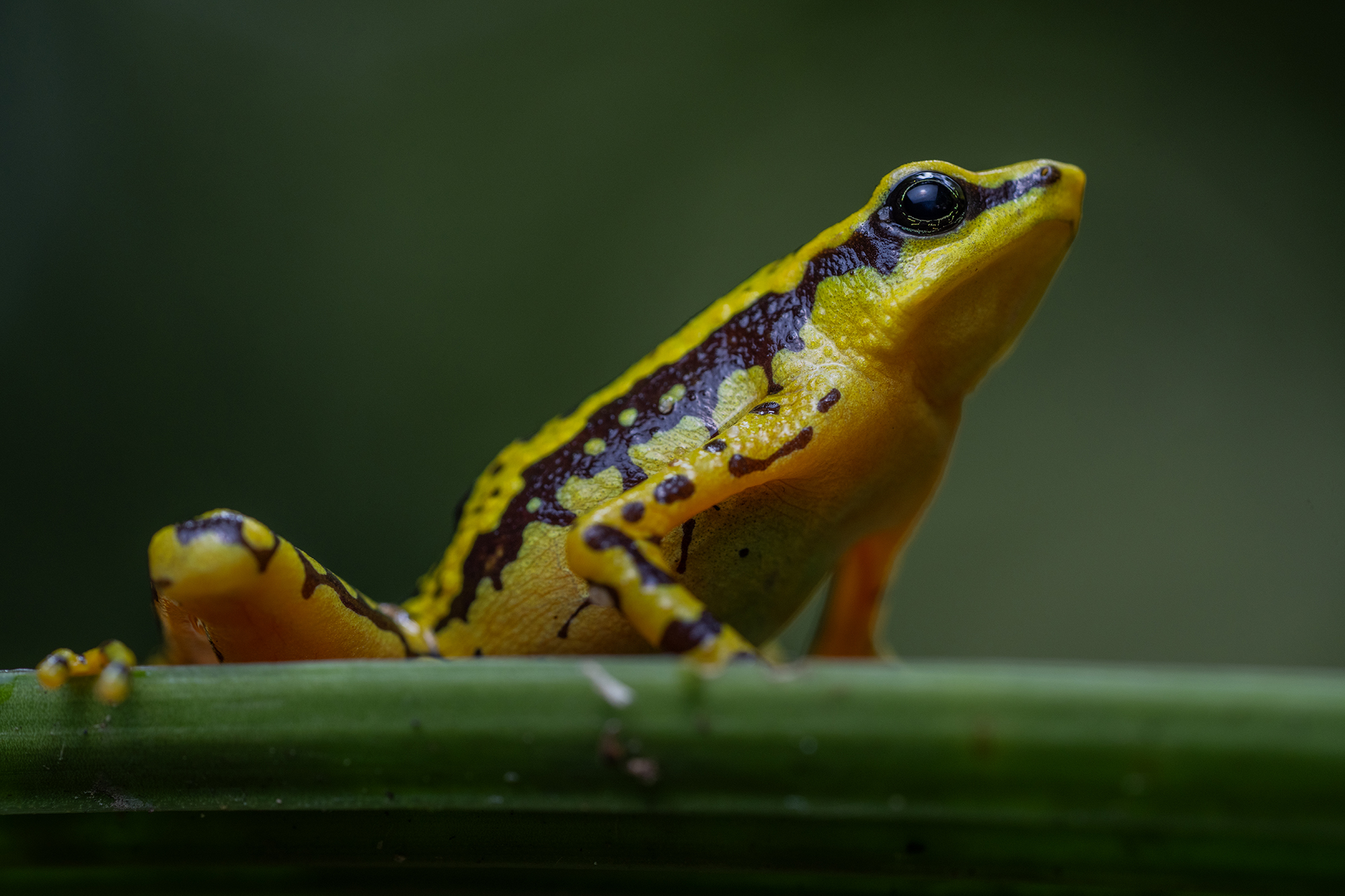Photo © Margarita Lampo, FUDECI
Amphibian species across the globe have been devastated in recent decades by the deadly chytrid fungus, which has driven many to the brink of extinction. Now, thanks to a $2 million grant from the Bezos Earth Fund, the Smithsonian Tropical Research Institute (STRI) and the Amphibian Survival Alliance (ASA), in collaboration with the Smithsonian National Zoological Park Conservation Biology Institute (NZCBI), will spearhead a groundbreaking 5-year regional initiative to combat this crisis and secure a future for amphibians across four Latin American countries.
This transformative grant unites the Smithsonian Tropical Research Institute, a leader in tropical science and biodiversity preservation, and the Amphibian Survival Alliance, the world’s largest global partnership dedicated to amphibian conservation, as co-leaders in a shared mission to protect amphibians and their habitats. Together, they will implement an unprecedented regional conservation model that mobilizes science, collaboration, and innovation to address the biodiversity crisis in high-priority landscapes.

STRI and NZCBI will provide critical scientific expertise, with STRI also playing a pivotal role through the Panama Amphibian Rescue and Conservation Project, a partnership between the Smithsonian, Cheyenne Mountain Zoo, and Zoo New England, to establish captive populations of frog species at greatest risk. Meanwhile, ASA will lead the effort to deliver regional impact, engaging its extensive network of partners, including Parque Explora (Colombia), FUDECI (Venezuela), and Centro Jambatu de Investigación y Conservación de Anfibios (Ecuador), to coordinate on-the-ground conservation actions in key amphibian biodiversity hotspots.
This BEF-supported initiative targets Latin America’s amphibian-rich ecosystems, making it one of the most significant amphibian conservation efforts to date. The project will serve as a global model for regional collaboration and knowledge-sharing, ensuring long-term benefits for amphibians and their habitats.
Key objectives include developing and refining techniques to recover amphibian populations impacted by fungal diseases, rewilding native frogs raised in captivity, and identifying and protecting critical habitats for conservation. Over the next five years, the project will enhance captive breeding programs for 25 priority species, aiming for a 15% increase in their captive populations. It will also establish the regional Amphibian Biobank, which will safeguard the future of at least 25 critically endangered species.
Capacity building and community engagement will be core pillars of the project. ASA and STRI will lead training workshops in small-population management, while jointly supporting the updating of National Amphibian Action Plans in four countries to align with international biodiversity targets. The initiative will also reach over 1,000 students annually through outreach programs, public seminars, and other education efforts to foster a deeper understanding of amphibian conservation.
This collaboration—empowered by the Bezos Earth Fund—paves the way for a sustainable future for amphibians and their ecosystems by combining the scientific rigor and institutional strength of STRI with the expertise and regional leadership of ASA. Together, this partnership demonstrates the power of global collaboration in addressing urgent biodiversity challenges and ensuring Life on a Sustainable Planet.
Gina Della Togna, ASA’s Executive Directors adds, “This is an unprecedented opportunity for amphibian conservation. For the first time, we are launching a coordinated international effort to halt amphibian extinctions in the Neotropics, a region that harbors 48% of the world’s amphibian biodiversity. It’s a powerful testament to what collaboration and joining forces can achieve for endangered species, and a sobering reminder of how much help amphibians need. I am deeply grateful to the Bezos Earth Fund for their trust in this partnership and their commitment to conserving the most threatened group of vertebrates on the planet. I am equally thankful to our incredible partners, whose expertise and dedication have made this ambitious initiative possible.”


